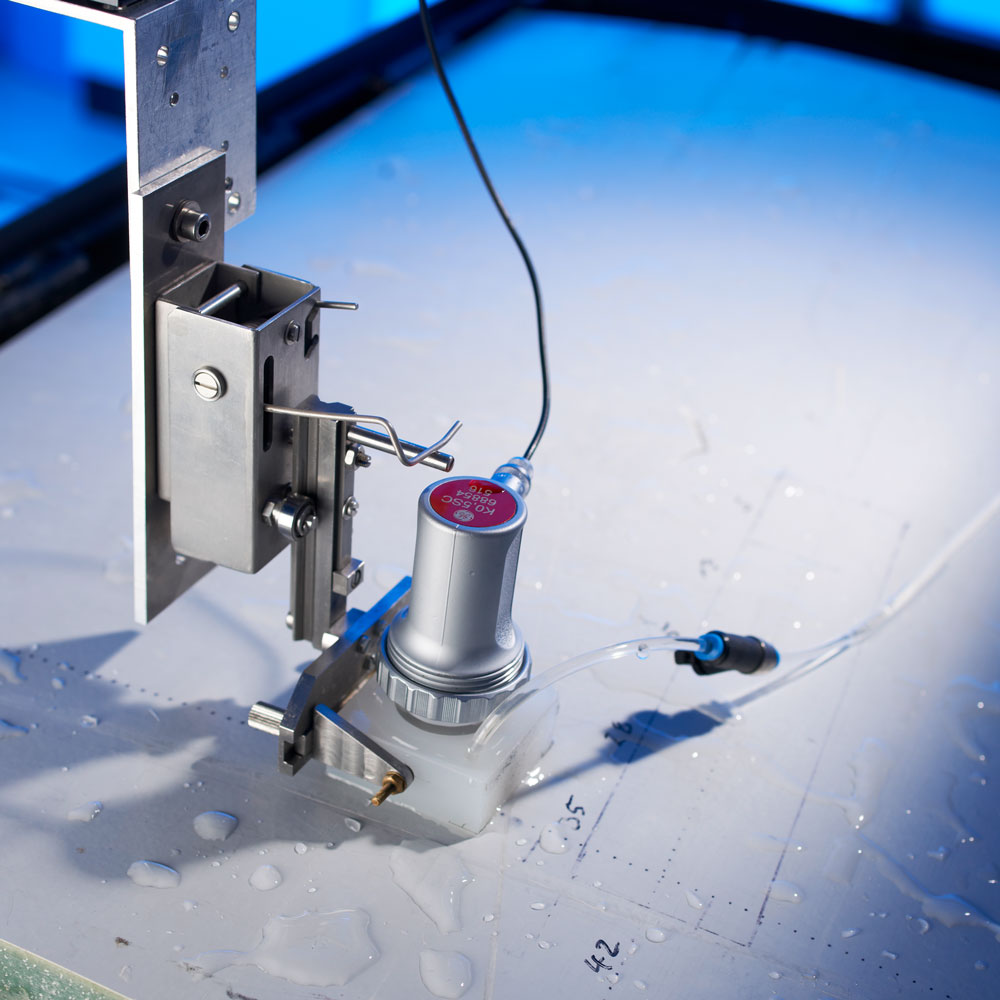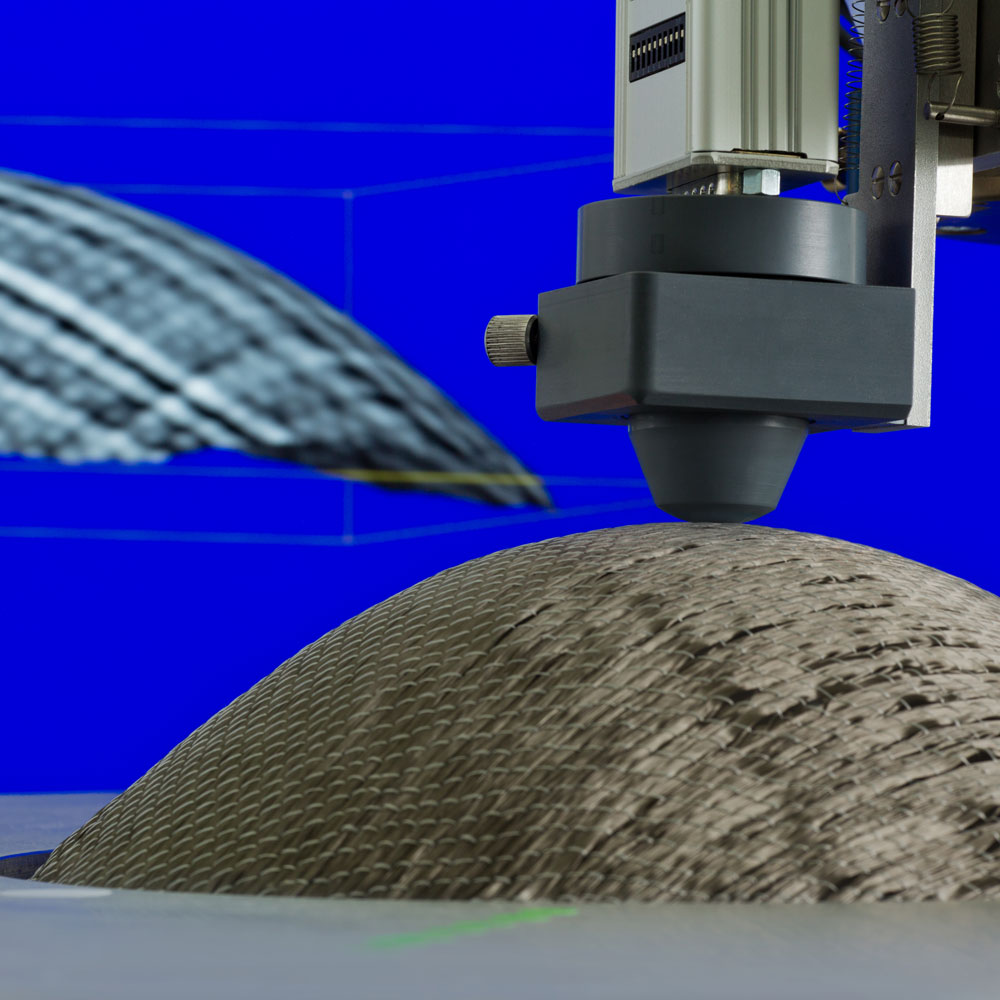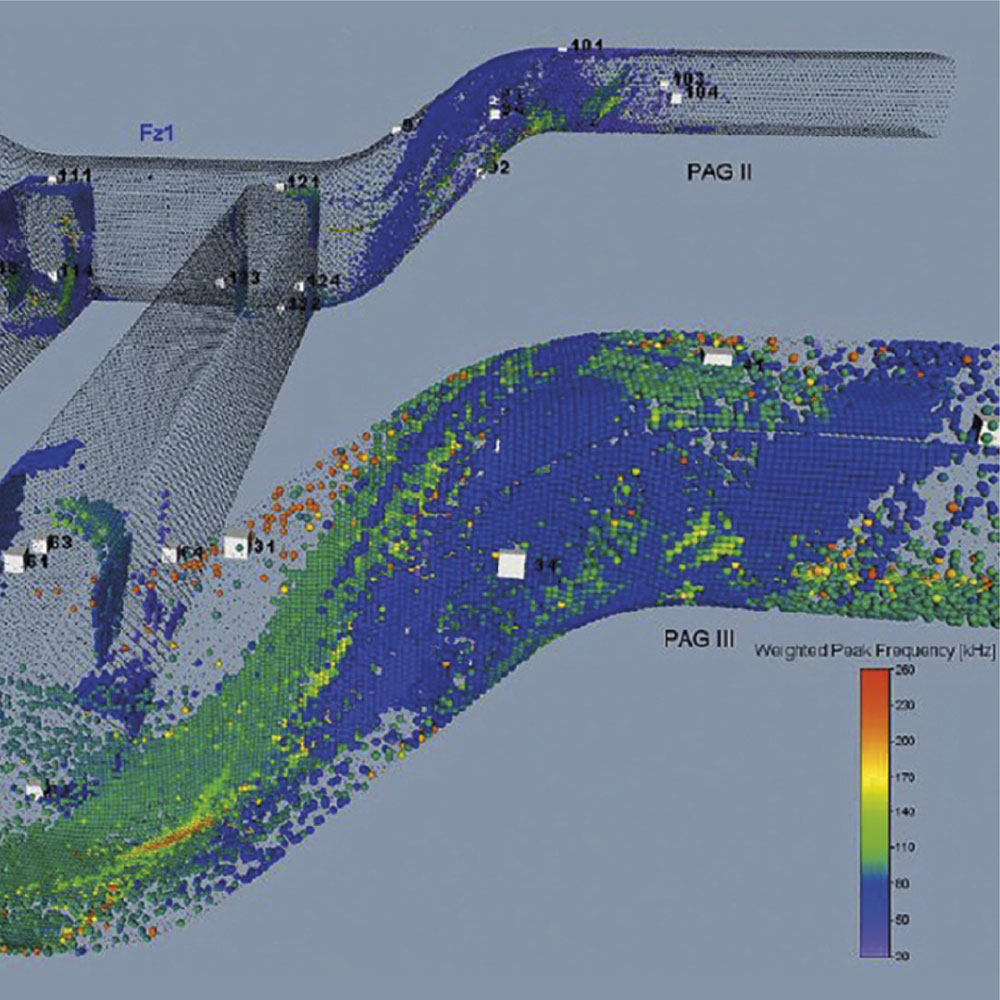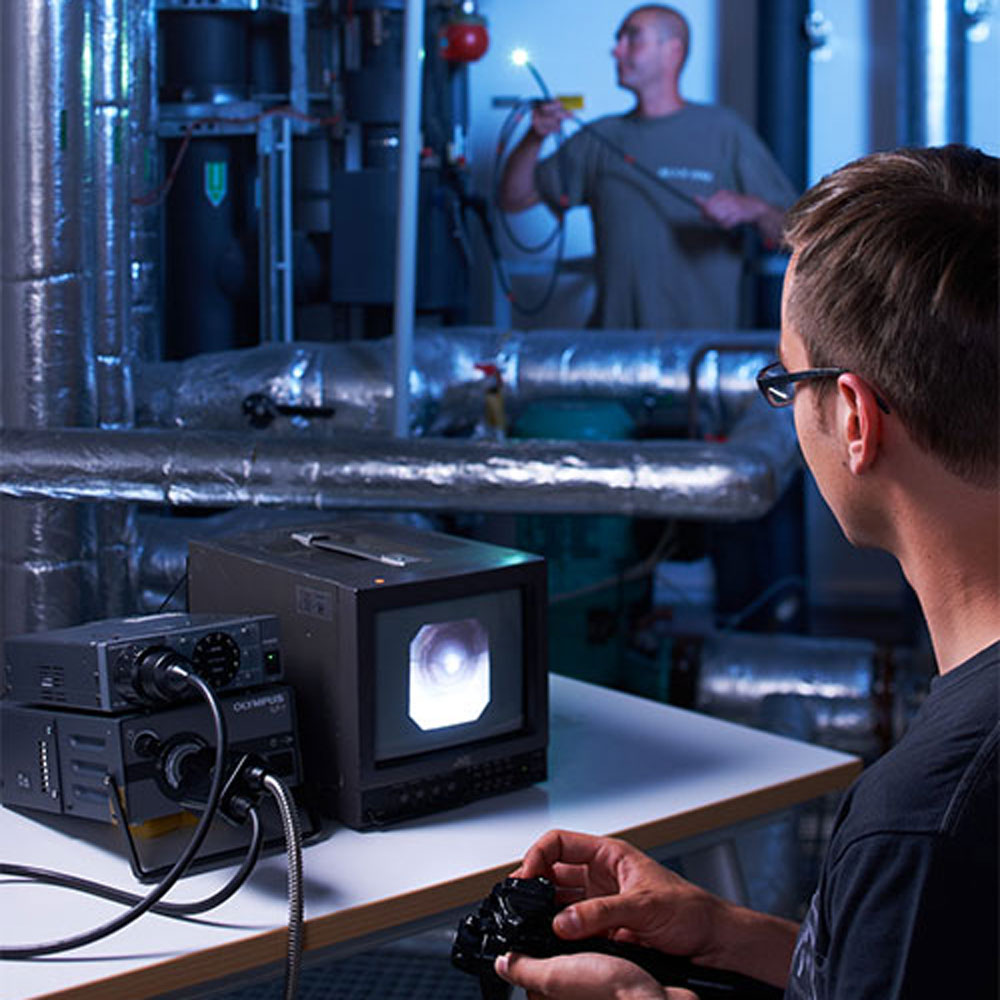
Accredited Test Lab

The valid and reproducible performance of non-destructive tests requires know-how and experience. A large number of national and international standards, which may differ depending on the industry, define the boundary conditions for the use of established and new procedures. Especially when optimizing and developing new methods and systems, current regulations must be complied with and new procedures or equipment systems must be set up accordingly.
The German National Accreditation Body (DAkkS) has granted the NDT test lab of Fraunhofer IKTS accreditation according to DIN EN ISO/IEC 17025 for four non-destructive testing methods.
Fraunhofer IKTS attaches great importance to secrecy and data security. Samples and data are stored in additionally secured rooms with highly restricted access. All employees of the accredited NDT test lab are aware of the special obligation to maintain secrecy and receive regular training.
Scope of accreditation
The accreditation of the NDT test lab applies to manual and mechanized testing methods (ultrasonic testing, eddy current testing, acoustic emission testing and visual inspection) on metallic components, fiber-reinforced and ceramic materials and plastics.
Ultrasonic testing
Ultrasonic testing is a quality assurance method for volume testing on specimens of a wide variety of geometries and materials. It is frequently used to inspect joints such as weld seams. Characterization of layer thicknesses down to 100 µm is also possible with this method.
The accredited NDT test lab of Fraunhofer IKTS offers ultrasonic testing with the following services:
- Manual and mechanized ultrasonic testing in immersion technique, contact technique, pulse-echo technique, transmission technique and on request also in other techniques
- Use of different ultrasonic probes (vertical, S/E and angle, immersion and phased array probes) with different frequencies and other parameters
- Ultrasonic scanning on flat, curved and also rotationally symmetric specimens of different materials with image reconstruction (feasible object parameters: weight < 100 kg, geometry < 500 x 300 x 300 mm)
- Detection of volume defects with material- and process-dependent resolution of Ø ≥ 100 µm
- Development, optimization and testing of new ultrasonic methods including access to simulation calculations
- Development of inspection concepts and preparation of inspection instructions
- Validation of new ultrasonic testing methods, including those developed by the customer
Eddy current testing
Eddy current testing is a very fast electromagnetic testing method that requires little equipment. It can be used to test for defects and geometry variations as well as for coating thickness determination. One focus is on applications with high-frequency eddy current technology, which is mainly used in the characterization of low conductive materials such as superalloys and composites.
The accredited NDT test lab of Fraunhofer IKTS offers eddy current testing with the following services:
- Manual eddy current inspection of components of different geometries
- Eddy current scans, also with very high spatial resolution (approx. 200 µm), on flat components
- Material characterization and testing for surface defects
- Determination of conductivity after calibration as well as layer thickness and wall thickness
- Determination of the drying behavior of thin functional layers
- Investigations with different sensors (absolute and differential sensors), measuring frequencies up to 100 MHz
- Development of test concepts and preparation of test instructions
- Validation of new eddy current test methods, including those developed by the customer
Acoustic emission testing
Acoustic emission analysis is one of the acoustic non-destructive testing methods in which individual emissions of sound are recorded and examined. It exploits the fact that sudden changes in the structure of a material, which can be triggered by various loads (mechanical, thermal, chemical), emit such sound events. From the propagation time of the signals from the sound emitting source to various sensors, the position of the damage can be determined. In composites, for example, analysis of the recorded signals can be used to determine the underlying damage mechanism such as fiber crack, fiber-matrix crack or delamination.
The accredited NDT test lab of Fraunhofer IKTS offers acoustic emission testing with the following services:
- Acoustic emission testing of components of different geometries and materials
- Investigation of material behavior under mechanical load on coupon specimens
- Development of test concepts and adapted test or monitoring systems for customized acoustic emission applications
- Validation of the application of the method to support the release of the method to the operator
Visual inspection
Visual inspection can be used to examine surfaces for visible defects. The procedure also includes testing for changed colors, which provide indications of defects in the structure, for example in weld seams.
The accredited NDT test lab of Fraunhofer IKTS offers visual inspection with the following services:
- Inspection for visible defects such as surface cracks, pores, discolorations
- Inspection by endoscopy of hard-to-reach areas (e.g. in pipes) and of components with complex geometry
- Optical magnifications



